Search
Search Results

Definition
Ancient Persian Mythology
The mythology of ancient Persia originally developed in the region known as Greater Iran (the Caucasus, Central Asia, South Asia, and West Asia). The Persians were initially part of a migratory people who referred to themselves as Aryan...
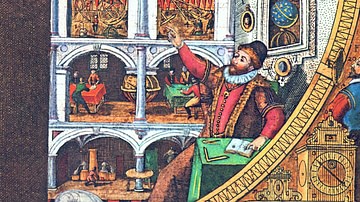
Definition
Tycho Brahe
Tycho Brahe (1546-1601) was a Danish nobleman who made the most significant contribution to our knowledge of astronomy before the telescope arrived. He discovered a supernova, observed the elliptical interplanetary orbit of a comet, updated...

Image
Map of the Neo-Assyrian Empire
This map illustrates the rise and territorial expansion of the Neo-Assyrian Empire (circa 911–609 BCE), a dominant Mesopotamian power that emerged after earlier phases of Assyrian history. Unlike their predecessors, Neo-Assyrian kings pursued...
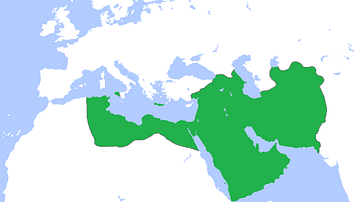
Image
Map of the Abbasid Empire
The extent of the Abbasid empire at its greatest extent has been shaded with green. The whole of the Arabian Peninsula, Persia, Iraq, Syria, parts of Asia Minor, Egypt, the North African coast excluding Morocco (Maghreb), Crete and the western...

Image
The Five Pillars of Islam (Arkan al-Islam)
This infographic illustrates the Five Pillars of Islam, which form the core practices of the religion, established during the lifetime of the Prophet Muhammad (7th century CE) —Shahada (faith), Salah (prayer), Zakat (charity), Sawm (fasting...
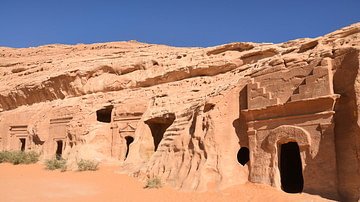
Image
Qasr al-Bint Necropolis in Hegra
The Qasr al-Bint necropolis in Hegra (Mada'in Salih) in modern-day Saudi Arabia is one of the four necropolis areas to have survived. Qasr al-Bint consists of 31 Nabatean tombs dating from 1 to 58 CE. The tombs include fine inscriptions concerning...
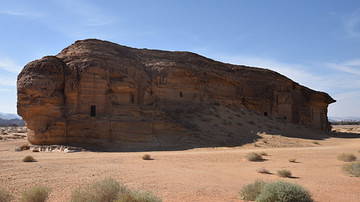
Image
Jabal al-Ahmar Necropolis in Hegra
The Jabal al-Ahmar Necropolis in Hegra (Mada'in Salih) in modern-day Saudi Arabia is one of the four necropolis areas to have survived. It contains 18 tombs, some of which were recently uncovered. The remains of a 2,000-year-old Nabatean...
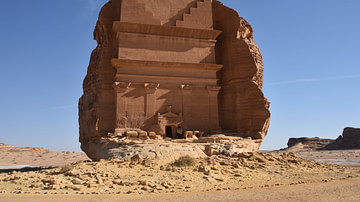
Image
Tomb of the Lion of Kuza, Hegra
The Tomb of the Lion of Kuza (Qasr al-Farid) is a 1st-century CE Nabatean unfinished tomb carved into a single huge rock in Hegra (Madain Saleh) in Saudi Arabia, the Kingdom of Nabatea's second capital after Petra. Qasr al-Farid is isolated...
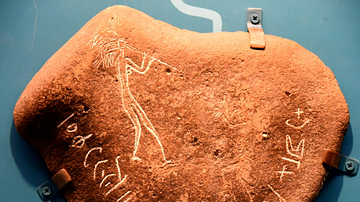
Image
Safaitic Inscription from Jordan
Nomadic people left tens of thousands of inscribed rocks, like this one, across Jordan desserts, written in Safaitic, an Arabian dialect. This rock playfully shows a woman playing the flute. The inscription reads "By Aqraban, son of Kasit...
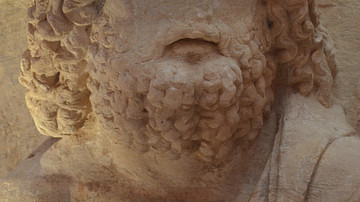
Image
Bust of Zeus-Dushara from Petra
Limestone bust of Zeus-Dushara from the courtyard enclosure of the Qasr al-Bint in the Nabataean city of Petra (Jordan). Dushara, the chief deity of Petra and the head of the Nabataean pantheon, was identified with the Greek god Zeus. This...